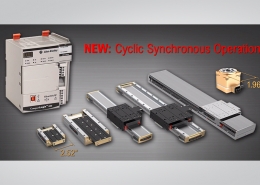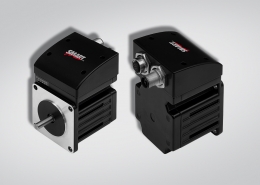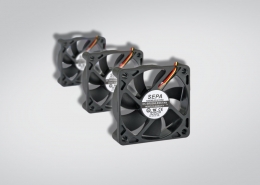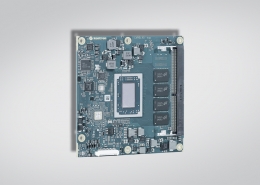x86 vs. ARM: Processor architectures and their impact on your company
The world of IT is characterized by different processor architectures, with x86 processors being particularly well-known. Depending on the application, however, an ARM processor may make more sense.
But how do these two differ from each other? And what effects do these differences have?
In this article, we take a closer look at some fundamental questions regarding x86 vs ARM.
What are x86 processors?
x86 processors are well known in the world of IT. This type of processor is used in the majority of computer and server hardware. If we look at the architecture, the following individual hardware components are independent of each other in an x86 system:
- Sound card
- Graphics cards
- Working memory
- CPU
Most components have separate chips, known as controllers. These components can be changed or expanded without affecting connectivity or the hardware platform.
What are ARM processors vs x86?
ARM processors, on the other hand, were developed to combine the additional components mentioned above in a central unit. This is an integrated circuit.
Unlike CPUs from Intel or AMD, there is no dedicated manufacturer for ARM processors. Instead, ARM Holdings licenses chip designs to other hardware manufacturers. These licensees then integrate the ARM processor chip into their own designs. This results in a diverse range of end products based on the ARM architecture.
In contrast to traditional x86-based computers, ARM chips are application-specific and not interchangeable. They are manufactured together in a so-called SoC (System-on-a-Chip). Aside from the highly technical differences between ARM vs x86, let’s look at some fundamental issues. Because these have a direct impact on your business and the quality of the devices you have to maintain.
RISC architecture and design philosophy: performance vs energy efficiency
The RISC architecture was developed to produce smaller chips with better performance for microcomputers.
This raised a fundamental design question: should the focus be on chip performance or energy efficiency?
ARM processors, integrated as SoCs, have focused on resource management, low energy consumption and low heat generation for a long time. In contrast, x86 CPUs tend to favor high processing speed.
However, both CPU designs offer strong performance: ARM and x86 compete for the title of the world’s fastest supercomputer.
Performance comparison: Where do ARM vs x86 score?
ARM chips show their strength on smaller devices such as smartphones and tablets and in various form factors. They are significantly more powerful and energy-efficient in these areas. In the ARM vs x86 competition, this has led to ARM gaining the upper hand in mobile devices.
However, the situation is different for devices with high-performance requirements such as video-intensive applications. Here, a standard x86 configuration is generally more powerful than its ARM alternative.
Software compatibility: A critical factor in ARM vs x86
The compatibility of software is a decisive factor in the ARM vs x86 decision. This is because operating systems must communicate directly with the hardware. They must use an instruction set that is optimized for the specific CPU architecture.
These differences can have a significant impact on the choice of suitable processor architecture for your applications. Android, for example, was developed to run on ARM chips.
Cost differences: the crucial point for companies
One aspect that should not be neglected in the ARM vs x86 question is the cost. ARM devices tend to be cheaper. There are 2 reasons for this:
- ARM processors are cheaper to buy.
- Energy efficiency also leads to lower operating costs in the long term. This is particularly the case with large fleets of appliances that are constantly switched on.
The short and long-term financial impact must therefore be considered when making a decision.
Conclusion: ARM vs x86 – The right choice for your company
The question – ARM vs x86 – is a strategic decision for companies. Individual needs, priorities and use cases play a decisive role. The following aspects should therefore be considered:
| Aspect | x86 processors | ARM processors |
| Processor architecture | Traditionally for computer and server hardware | Application-specific, integrated in a SoC (system-on-a-chip), diverse end products |
| Manufacturer | Intel, AMD | ARM Holdings licenses chip designs to various hardware manufacturers |
| RISC architecture | Not RISC (Reduced Instruction Set Computing) | Originally designed for resource management, low energy consumption and low heat generation |
| Performance targets | Tendency towards high processing speed | Focus on energy efficiency, especially in mobile devices |
| Performance comparison | Strong performance, particularly in performance-intensive applications | More powerful in small devices such as smartphones and tablets, energy-saving |
| Software compatibility | Operating systems and software optimized for x86 | Requires specific adjustments, Android is optimized for ARM chips |
| Costs | More expensive to purchase and operate | Cheaper to purchase, lower operating costs in the long term due to energy efficiency |
| Decision-making factors for companies | High performance, specific software requirements | Cost optimization, energy efficiency, adjustments to mobile devices |
Every facet should be considered carefully to find the optimum processor solution for your company. After all, the right choice has far-reaching effects on the functionality and cost-effectiveness of your IT infrastructure.
Do you still have questions about ARM or x86 processors?
At next system, we offer both variants. We will be happy to advise you free of charge and without obligation.
Share Article













 next system
next system







 next system & SEPA
next system & SEPA











